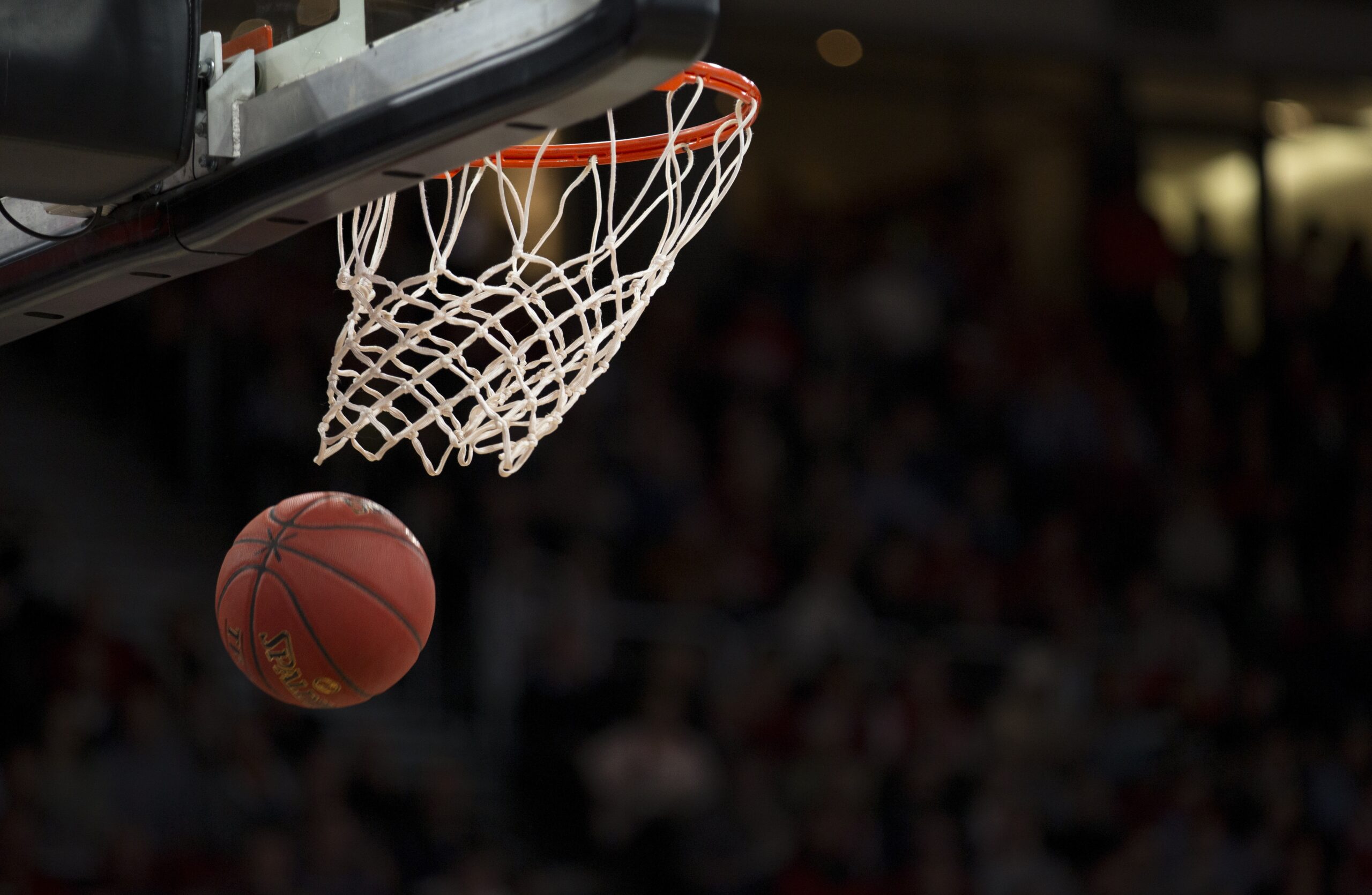Have you ever wondered what the overhead pass in basketball is all about and when it works best? Well, wonder no more! In this article, we will break down the overhead pass and explore its effectiveness in various game situations. Whether you’re a basketball enthusiast looking to up your passing game or a curious observer wanting to learn more about the sport, this article will provide all the information you need to understand and utilize the overhead pass effectively. So, let’s get started and discover the ins and outs of this fundamental basketball skill!
Overview of the Overhead Pass
The overhead pass is a fundamental basketball technique used to accurately and efficiently move the ball from one player to another. It involves extending the arms fully overhead and using a throwing motion to pass the ball to a teammate. This pass is commonly used in many situations, such as inbounding the ball, breaking full-court pressure, and creating fast-break opportunities. By understanding the proper technique, variations, benefits, and utilization of the overhead pass, players can improve their passing skills and contribute to their team’s success.
Definition of the overhead pass
The overhead pass, also known as the two-handed chest pass, is a basketball technique executed by extending both arms fully above the head, forming a diamond shape with the hands. The passer then rotates the wrists and pushes the ball forcefully towards a teammate. This pass is commonly used as a quick and accurate method to move the ball across the court, ensuring that it reaches its intended target with minimal risk of interception.

Purpose of the overhead pass
The primary purpose of the overhead pass is to facilitate ball movement and maintain offensive flow. By utilizing this technique, teams can effectively transition the ball from one side of the court to the other, making it harder for the defense to react and adjust. Additionally, the overhead pass allows players to create scoring opportunities, either by hitting a teammate cutting to the basket or setting up a play for a perimeter shot. Overall, the overhead pass is a crucial skill that fosters teamwork and ensures efficient ball distribution.
History of the overhead pass
The overhead pass has been a fundamental part of basketball since its early beginnings. It is believed to have originated during the late 19th century, around the same time the sport was developed by Dr. James Naismith. As the game evolved, players recognized the efficiency and accuracy of the overhead pass, which led to its incorporation into basketball fundamentals. Over the years, various coaching techniques and strategies have refined the execution of the overhead pass, enhancing its effectiveness as a key aspect of the game.

Technique and Execution
Proper hand placement
To execute the overhead pass effectively, proper hand placement is crucial. Begin by placing the thumbs parallel to each other and facing upward, forming a diamond shape with the hands. The fingertips should be spread evenly across the ball, ensuring a firm grip. By maintaining this hand positioning, players can generate maximum control and accuracy when releasing the ball.
Footwork and body positioning
Proper footwork and body positioning are essential elements in executing the overhead pass correctly. Start by positioning your feet shoulder-width apart, with one foot slightly ahead of the other for balance and stability. Bend your knees slightly, keeping your body low to improve leverage. As you initiate the pass, transfer your weight from the back foot to the front foot, generating power and ensuring a strong throw. By maintaining a solid base and proper body alignment, you can maximize the effectiveness of your pass.
Follow-through motion
A crucial aspect of the overhead pass is the follow-through motion after releasing the ball. After pushing the ball towards your intended target, continue extending your arms forward, loosely flicking your wrists. This follow-through motion helps to ensure accuracy, adds spin to the ball for improved control, and assists in generating enough power for longer passes. Practicing a smooth and consistent follow-through motion will contribute to the overall effectiveness of your overhead passes.
Variations of the Overhead Pass
One-handed overhead pass
While the two-handed overhead pass is the most commonly used technique, there are situations where executing a one-handed overhead pass can be advantageous. This variation is particularly useful when a quick release or a more precise pass is required. By gripping the ball with one hand and extending the arm fully overhead, players can create a faster and more direct pass to their teammate. Although it requires more strength and accuracy, mastering the one-handed overhead pass allows players to add versatility to their passing repertoire.
Two-handed overhead pass
The two-handed overhead pass is the classic and most widely used variation. It provides stability, control, and accuracy while minimizing the risk of turnovers. By holding the ball with both hands in the diamond shape, players can ensure a secure grip and generate power for longer passes. The two-handed overhead pass is also suitable for bounce passes and lob passes, making it a versatile technique that can be executed in various game situations.

Benefits and Advantages
Improved accuracy
One of the key benefits of the overhead pass is its ability to deliver accurate passes. With proper technique and execution, the ball can travel precisely and hit the intended target, even over longer distances. By consistently practicing the overhead pass, players can enhance their passing accuracy, leading to more successful plays and increased offensive efficiency.
Enhanced court vision
The overhead pass allows players to survey the court and make smart decisions based on what they see. By extending the arms fully overhead, players have a clear line of sight to their teammates and can quickly assess the defense’s positioning. This improved court vision enables players to make intelligent passes, finding open teammates and exploiting gaps in the defense.
Effective for long-distance passes
The overhead pass is particularly effective for executing long-distance passes with control and accuracy. Whether it’s a cross-court skip pass or a full-court heave, the technique and power generated in the overhead pass allow players to accurately deliver the ball to their teammates in a timely manner. This versatility in passing distance can be a valuable tool in breaking down the defense and setting up scoring opportunities.
Effectiveness in Different Situations
Inbounding the ball
When inbounding the ball from the sideline or baseline, the overhead pass is commonly used due to its accuracy and the ability to quickly move the ball to an open teammate. By extending the arms fully and aiming for a specific target, players can initiate the play and ensure the ball reaches the designated recipient.
Breaking full-court pressure
When facing full-court pressure from the defense, executing the overhead pass can be an effective tactic to advance the ball and relieve pressure. By lofting the ball over defenders, players can create passing lanes and set up a fast break or initiate their offensive play, allowing them to gain momentum and attack the opposing defense.
Creating fast-break opportunities
The overhead pass is instrumental in creating fast-break opportunities when transitioning from defense to offense. By quickly moving the ball up the court with accurate overhead passes, teams can catch the defense off guard and exploit openings in the opposing team’s transition defense. The speed and precision of the overhead pass play a crucial role in effectively capitalizing on fast-break situations.
Utilization in Various Basketball Positions
Point guard
As the primary playmaker and distributor of the team, the point guard heavily relies on the overhead pass to initiate offensive plays and set up scoring opportunities for their teammates. The ability to accurately deliver the ball to open players is essential in driving the team’s offensive success and maintaining control of the game tempo.
Shooting guard
While shooting guards are primarily known for their scoring prowess, their ability to execute accurate and timely passes can significantly impact the flow of the game. By utilizing the overhead pass, shooting guards can create opportunities for their teammates, attract defensive attention, and enhance their offensive versatility.
Small forward
The small forward position often requires versatility and the ability to contribute in multiple facets of the game. Utilizing the overhead pass allows small forwards to make accurate passes to their teammates, contribute to ball movement, and create scoring opportunities both from the perimeter and inside the paint.
Power forward
Power forwards frequently find themselves involved in high-intensity situations, including rebounding battles, post-up plays, and interior passing. Incorporating the overhead pass into their passing repertoire enables power forwards to make strong, accurate passes over defenders, facilitating ball movement in tight spaces.
Center
Centers, although traditionally known for their post presence and scoring ability, can benefit from incorporating the overhead pass into their game. By using their height advantage, centers can deliver accurate passes over defenders, engage in high-low plays, and initiate offensive plays from the low post.
Key Considerations for Success
Passing angles and timing
Understanding passing angles and timing is crucial for successfully executing overhead passes. By quickly assessing the court and identifying open passing lanes, players can anticipate the movement of their teammates and time their passes accordingly. Properly leading the recipient, considering defensive pressure, and adjusting passing angles is essential for consistently accurate and effective overhead passes.
Court awareness
Developing strong court awareness is essential for making effective overhead passes. By constantly scanning the court and being aware of the positioning of both teammates and defenders, players can make smart decisions and execute well-placed passes. This spatial awareness allows players to exploit openings in the defense and create advantageous scoring opportunities for their team.
Communication with teammates
Clear communication among teammates is a vital aspect of successful overhead passing. By effectively communicating with hand signals, calls, and verbal cues, players can ensure that their teammates are ready to receive the pass and can position themselves optimally. Good communication minimizes turnovers, improves accuracy, and reinforces effective team play.
Common Mistakes to Avoid
Lack of proper form
One common mistake when executing the overhead pass is neglecting proper form and technique. Failing to extend the arms fully overhead, gripping the ball incorrectly, or not following through correctly can lead to inaccurate passes and turnovers. By focusing on maintaining the correct form, players can consistently deliver accurate and effective overhead passes.
Insufficient strength and technique
Another mistake is not generating enough power and velocity in the overhead pass. This can result from inadequate strength, improper footwork, or a lack of understanding of the necessary techniques. By dedicating time to developing strength and practicing proper technique, players can ensure that their passes are forceful enough to reach teammates with precision.
Misjudging passing lanes
Misjudging passing lanes is a common error that can lead to turnovers. Overhead passes must be executed with precision, particularly when trying to pass over defenders or through tight spaces. Misjudging the available space and failing to recognize defensive positioning can result in intercepted passes. Practicing spatial awareness and recognizing passing opportunities can help players avoid this mistake.
Training Drills for the Overhead Pass
Passing against defensive pressure
To improve the efficacy of the overhead pass under defensive pressure, players can incorporate drills that simulate game-like situations. One effective drill is the “two-on-one passing drill,” where two offensive players work together to pass the ball accurately while being guarded by a defender. By practicing passing through tight spaces and under pressure, players can enhance their decision-making, accuracy, and confidence in executing overhead passes.
Passing accuracy exercises
Improving passing accuracy is crucial for successful overhead passes. Players can enhance their accuracy by incorporating various passing accuracy exercises into their training routine. One such exercise is “target passing,” where players aim for a specific spot on a wall, teammate’s hand, or designated target. This drill helps sharpen passing accuracy and encourages players to incorporate proper technique and form into their overhead passes.
Effective Combinations with the Overhead Pass
Pick and roll
The pick and roll play, a staple in basketball, often utilizes the overhead pass to initiate quick ball movement. As the ball handler drives towards the basket after utilizing a screen, they can execute an overhead pass to their rolling teammate, who is often in a prime position to finish at the rim. The overhead pass in the pick and roll effectively leverages the technique’s accuracy and allows for swift and precise passing in a quick decision-making situation.
Give and go
The give and go play is another effective combination with the overhead pass. By passing the ball to a teammate and immediately cutting towards the basket, the passer can receive a return pass via an overhead pass, effectively bypassing defenders and creating open scoring opportunities. The overhead pass’s accuracy and ability to quickly move the ball play a vital role in effectively executing the give and go play.
Alley-oop
The alley-oop play, often seen in highlight reels, combines the overhead pass with a player’s ability to finish above the rim. By utilizing the overhead pass, a teammate strategically throws the ball near the basket, allowing the receiving player to catch it mid-air and score with a powerful dunk or layup. The overhead pass’s accuracy and ability to create high-arcing passes make it an ideal technique for executing alley-oop plays.
In conclusion, the overhead pass is a fundamental basketball technique that facilitates ball movement, enhances accuracy, and creates scoring opportunities. By mastering the proper technique, understanding its variations, and considering the benefits, players can effectively utilize the overhead pass to their advantage. Whether executing it as a point guard, shooting guard, small forward, power forward, or center, the overhead pass is an essential tool in a player’s passing arsenal. With strong court awareness, effective communication, and consistent practice, players can elevate their passing skills, contribute to their team’s success, and enjoy the satisfaction of executing precise and skillful overhead passes on the basketball court.

